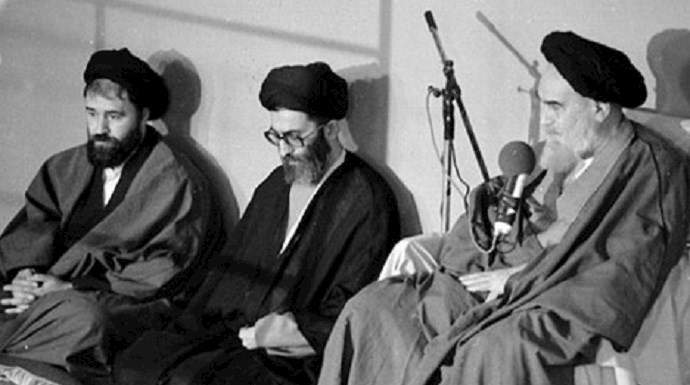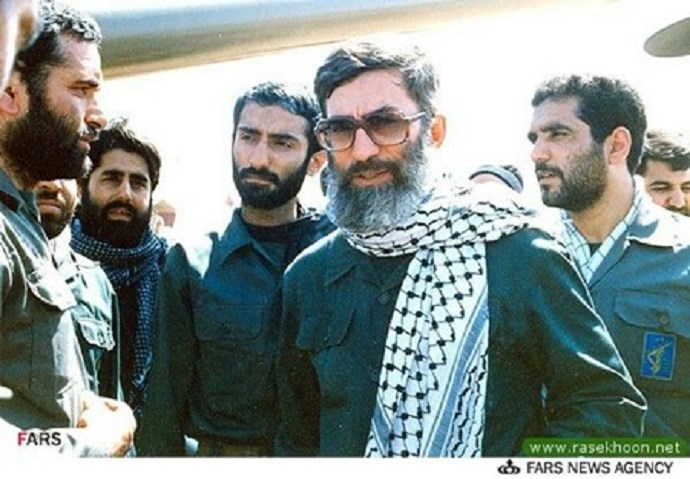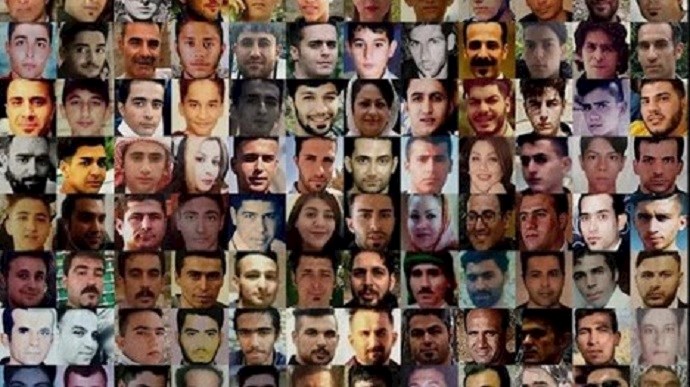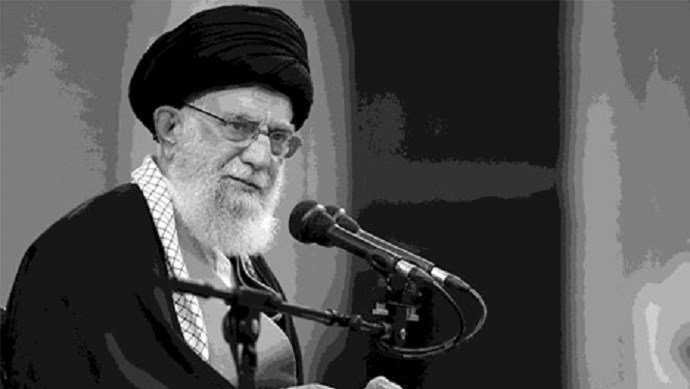Analysis by PMOI/MEK
Iran, October 4, 2020—Ali Khamenei is the current Supreme Leader of the mullahs’ regime in Iran. Khamenei is ultimately responsible for all human rights violations across Iran and terrorist meddling in other countries as the most powerful official of the theocratic regime with the final say about all state matters.
The 81-year-old Khamenei, who was elevated overnight from the clerical rank of Hojjat al-Islam to Ayatollah, became Supreme Leader in 1989 following the death of regime founder Ruhollah Khomeini, despite lacking the required rank of marja-e taqlid (source of emulation).
The Supreme Leader’s office, under the supervision of Khamenei and his son eldest Mojtaba, is an entity that oversees dozens of security, political, and economic institutions.
Khamenei’s wealth is estimated to be close to $200 billion.
Early years and education
Ali Khamenei was born on 19 April 1939 in the city of Mashhad, northeast Iran. He started his studies at the Dianati School of Mashhad. Khamenei became acquainted with politics at the age of 23 when Khomeini rejected the “White Revolution,” a series of reforms launched in Iran launched back in 1963 by the Shah, Iran’s then monarchial dictator. Following the 1979 revolution Khamenei was appointed as representative of the Revolutionary Council in the Defense Ministry.
After the passing of Grand Ayatollah Mahmoud Taleghani, Khamenei was appointed by Khomeini as the Friday prayer imam of the Iranian capital Tehran. Following the deaths of then regime president Mohammad Ali Rajai and then regime prime minister Mohammad Javad Bahonar, Khamenei was appointed as president.

Ali Khamenei (center), Ruhollah Khomeini (right), and Khomeini’s son Ahmad (left)
Ali Akbar Hashemi Rafsanjani, an influential cleric close to Khomeini, suggested Khamenei be appointed as the regime’s Supreme Leader following Khomeini’s death in 1989. Hossein Ali Montazeri was for years the designated successor of Khomeini, but he was later outcast for his protests against the massacre of thousands of political prisoners in 1988. Khamenei was appointed as Khomeini’s successor in a pre-planned meeting on June 4, 1989 by Rafsanjani.
“I congratulate the appointment of a Supreme Leader of club-wielders, looters, and obscenity! There is nothing that we can do now that the illiterates and irrationals have taken power,” Montazeri wrote in this regard.
Khamenei’s positions
Ali Khamenei has always been one of the regime’s senior officials after the 1979 revolution. The positions he has held include establishing the “Islamic Republic Party” with Mohammad Beheshti, Bahonar, and Rafsanjani on February 18, 1979. In 1980, he was responsible for the suppression of minorities in Kurdistan and Khorramshahr by the Revolutionary Guards (IRGC).
Timeline:
Friday prayer Imam of Tehran – 1979
Member of the Parliament from Tehran – 1979
Khomeini’s representative in the Supreme Defense Council – 1980
Presence in military fronts during the Iran-Iraq war – 1980
Two terms as regime president, from September 1981 to 1988
Member of the Supreme Cultural Revolution Council – 1981
President of the Expediency Discernment Council – 1987
President of the Constitutional Review Council – 1988
Supreme Leader since 1989 until present

Ali Khamenei during the 1980s Iran-Iraq War
Khamenei’s assets & wealth
According to a statement issued on April 26, 2019, by the U.S. Embassy in Baghdad, Khamenei controls a financial empire worth an estimated $200 billion. His sons and daughters each own assets worth billions of dollars. Khamenei also controls financial giants such as the foundation of the “Execution of Imam Khomeini’s Order” (EIKO), with assets estimated at “$95 billion.”
The Mostazafan Foundation
Khamenei also controls the Mostazafan Foundation, which oversees assets left by the monarchist regime of the Shah and its affiliates. The Foundation owns thousands of houses, residential complexes, villas, agricultural lands, factories, and palaces. The Mostazafan Foundation’s turnover has never been announced.
Astan-e-Quds-e-Razavi
The Astan-e Quds Razavi (AQR) “charity” foundation is one of the oldest financial and religious foundations in Iran. This entity is another example of how the clerical regime is taking advantage of the Iranian people’s religious beliefs to pursue its ominous objectives.
AQR is headed by Ebrahim Raisi, the regime’s current judiciary chief and a cleric known for his direct role in the 1988 massacre of 30,000 political prisoners.
AQR is not accountable to the government and reports to Khamenei himself. According to the International Monetary Fund, the foundation’s investment in the fiscal year of 2014 was about $188 billion. The AQR manages all financial endowments accrued over the past few decades and Khamenei himself appoints its “custodian.”
In the last 40 years, only three individuals have held this position. The Astan-e Quds Razavi has played an active role in providing financial, material and logistical support to fundamentalist and terrorist groups within the last few years. Particularly, the heads of AQR have deep ties with senior Lebanese Hezbollah. It is worth noting that these activities have been expanding during the past few years.
Human rights violations
As the highest official of the clerical regime Khamenei is the main figure responsible for human rights violations in Iran. This includes the execution of 120,000 political prisoners, massacre of 30,000 political prisoners in 1988, torturing and imprisonment of thousands of dissidents who were mostly members and supporters of the Iranian opposition People’s Mojahedin Organization of Iran (PMOI/MEK), suppression of religious and ethnic minorities, suppression of women in particular, suppression of the 1999 student uprising, suppression of the 2009 post-election uprisings, suppression of 2017/2018 nationwide protests, killing of 1,500 protesters in the aftermath of the nationwide November 2019 protests, the assassination of dissidents inside the country and abroad, such as Prof. Kazem Rajavi, and terrorism plots such as the 2018 Iranian opposition gathering at Villepinte, France, and the killing sprees targeting people in Syria, Yemen, and Iraq.

Iran’s regime gunned down and massacred more than 1,500 protesters during nationwide November 2019 uprising
As a member of the Supreme Cultural Revolution Court, Khamenei played a key role in closing universities and expelling dissident students and teachers in the early years following the 1979 revolution.
Khamenei was the regime president during the 1988 massacre of political prisoners. “Have we abolished the death penalty? No! In the Islamic Republic we have death penalty for those who deserve it,” he said at the time. “If they are connected to the MEK, what should we do? They are sentenced to death and we execute them. We are not joking about this.”
Terrorist attacks abroad
After the death of its founder Ruhollah Khomeini, Khamenei planned to eliminate its internal and external opposition figures during the 1990s.
The first target was Abdul Rahman Ghassemlou, leader Iranian Kurdish group KDPI. He was assassinated on July 13, 1989, in Vienna by Iranian regime terrorists who planned to meet him for supposed negotiation talks. At the time, weak efforts by Austrian authorities allowed the murderers to return to Iran, where they were warmly received and rewarded by regime officials.
Another renowned figure assassinated in 1990 was Dr. Kazem Rajavi, brother to Iranian Resistance leader Massoud Rajavi. The fatwa for his murder was issued many years ago by Khomeini himself. He was hated by the mullahs for exposing the regime’s crimes against humanity, especially against political prisoners and prisoners of conscience.
Without realizing the shift in the international spectrum, the mullahs once again attempted to carry out another terrorist attack in 2018. This time, they sent one of their senior diplomats, Assadollah Assadi, to plot a bomb in the annual Iranian Resistance gathering in Villepinte, near Paris. Assadi was apprehended by German authorities red-handed on German soil after delivering the explosives to the hit team in Luxembourg. He is now facing trial in Belgium. This is the first time an Iranian diplomat is being prosecuted for direct involvement in terrorism.
None of these attacks could be carried out without specific orders and permissions from Khamenei.
Khamenei’s successor
Ebrahim Raisi, the current judiciary chief, is seen as a potential figure to succeed Khamenei. But it is not clear who will eventually become Khamenei’s successor. Last year, in an unexpected development in Iran, the power struggle over the position of the Iranian supreme leader increased dramatically. Mohammad Yazdi, a senior Iranian regime official who is a member of the Guardian Council and previously headed the judiciary, attacked Sadeq Larijani, also a former head of the judiciary and, according to rumors, a potential competitor to Raisi.
The power struggle and ambiguities surrounding Khamenei’s succession have left him and his regime in a weak state, and are making it harder for him to maintain hold on power.





